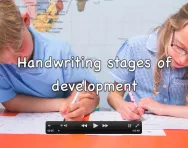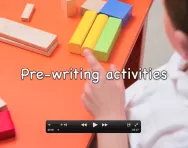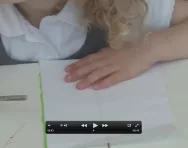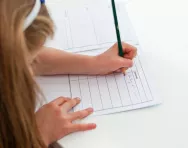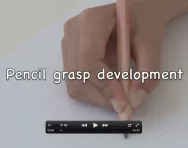Important update from TheSchoolRun
For the past 13 years, TheSchoolRun has been run by a small team of mums working from home, dedicated to providing quality educational resources to primary school parents. Unfortunately, rising supplier costs and falling revenue have made it impossible for us to continue operating, and we’ve had to make the difficult decision to close. The good news: We’ve arranged for another educational provider to take over many of our resources. These will be hosted on a new portal, where the content will be updated and expanded to support your child’s learning.
What this means for subscribers:
- Your subscription is still active, and for now, you can keep using the website as normal — just log in with your usual details to access all our articles and resources*.
- In a few months, all resources will move to the new portal. You’ll continue to have access there until your subscription ends. We’ll send you full details nearer the time.
- As a thank you for your support, we’ll also be sending you 16 primary school eBooks (worth £108.84) to download and keep.
A few changes to be aware of:
- The Learning Journey weekly email has ended, but your child’s plan will still be updated on your dashboard each Monday. Just log in to see the recommended worksheets.
- The 11+ weekly emails have now ended. We sent you all the remaining emails in the series at the end of March — please check your inbox (and spam folder) if you haven’t seen them. You can also follow the full programme here: 11+ Learning Journey.
If you have any questions, please contact us at [email protected]. Thank you for being part of our journey it’s been a privilege to support your family’s learning.
*If you need to reset your password, it will still work as usual. Please check your spam folder if the reset email doesn’t appear in your inbox.
8 great handwriting activities

Handwriting activity: shopping lists
Brilliantly adaptable for different ages and stages. A three-year-old can draw what you need, a five-year-old can write down the initial sounds of each item and a nine-year-old can write it out fairly accurately. You could start by writing the list together, with your child simply being responsible for adding one or two items. Children love to follow this up with the trip to the shops, ticking the items off as they go around. There’s a real purpose, and it’s writing in action. And pretty handy too!
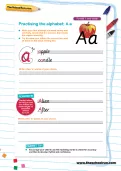
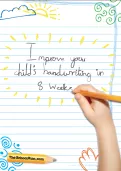
Improve handwriting in 10 minutes a day
- Step-by-step handwriting guide
- Over 200 worksheets
- From patterning to cursive
Handwriting activity: book reviews
Introduce children to the idea by finding book reviews of some of their favourite and most familiar books (online will be easiest) and reading them together. Then encourage them to write their own versions, or review some new books with you. Questions to answer include: Who were the main characters? What did they do? Did you enjoy the book? Why?
Handwriting activity: role play
Adults write for many purposes, at work as well as home. Encourage children to pretend to work at a bank, the post office or a travel agency. They will need to be jotting down facts and figures as they work!
Handwriting activity: ‘To do’ lists
Your child may like to ‘help’ by writing a ‘to do’ list for you for the day ahead. It might include: breakfast, school run, play group, baking biscuits, work, play, etc. Thinking they are being helpful is a great incentive for most children who are striving to be one of the grown-ups! Alternatively, they can write their own list for the tasks they have to complete.
Handwriting activity: menus
Challenge your child to come up with their own dream menu, including all their favourite dishes and treats. Alternatively you could tell them what culinary delights are in store for the day (most children we know ask about what they are having for lunch and dinner the moment they have finished their breakfast, anyway!) and they could write it out.
Handwriting activity: recipes
Again on the food theme, if you do a baking/cooking activity with your child, encourage them to write the recipe out afterwards. This could be in the form of a bullet-pointed list, in pictures or a mixture of both. Explain that it’s important that a recipe can to be followed by someone else, so including every step is crucial.
Handwriting activity: homemade books
While writing for real purpose should be the focus when children are learning to write, sometimes being creative just comes naturally. Some children write stories almost as soon as they can hold a pen, their imagination flowing and running wild. This should be encouraged. Don’t emphasise spelling accuracy as (that will come!), but rather focus on the creativity; cherish and nurture it. At school, due to time constraints, children are not always given the opportunity to just write freely. Unfortunately, in most school settings, the days of writing chapter after chapter of a story the child has chosen the theme for is a thing of the past. Some children really yearn for this sort of opportunity, so let them run free with their story ideas at home.
Other handwriting activities to try…
• Write notes to a friend
• Make up invitations to a party (real or imaginary)
• Plan a trip (where would you go, how would you get there and what would you see?)
• Write a list of items to take on holiday or bring to school
• Keep a diary
• Write to a penpal
Handwriting troubleshooting tips
Learning to write is more than just knowing how to form the letters – it’s important to help your child develop the coordination and fine motor skills they need to be ready to write properly. Read up on how your child learns to write, and find out what the problem areas are by learning to recognise dysgraphia.
Playing with toys such as Lego or clay can strengthen finger muscles, and watching how your child sits when they write can prevent arm, neck and shoulder pain from incorrect posture.
For more helpful hints on how to establish good handwriting practice at home, check out this list of handwriting dos and don’ts. Find out ways to encourage, when to correct and how to have fun with writing!
If you're looking for some hands-on handwriting practice browse through our collection of handwriting worksheets to find the right one for your child.

